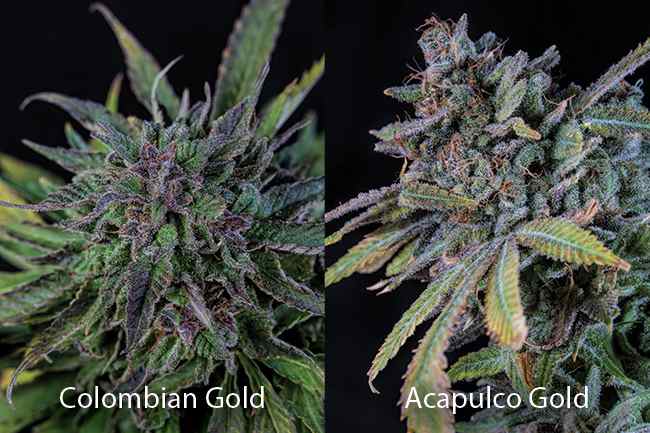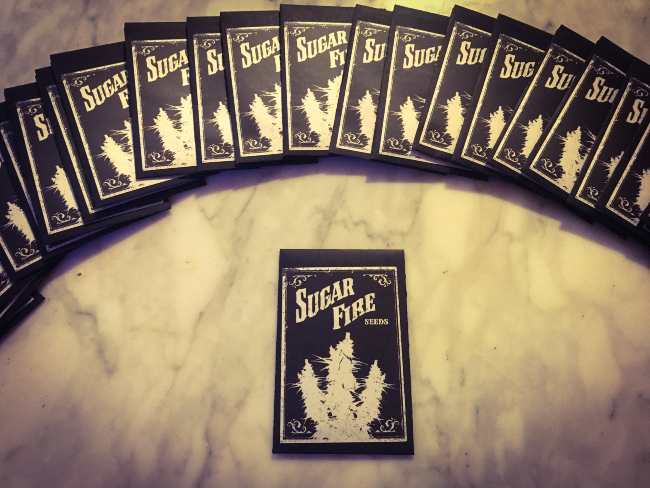
Friday May 20, 2022
By Carter Casad
 Growing
Growing
If you have been interested in breeding cannabis and making your own strains you might have asked yourself this: How do I create something that will stand out? It seems like every week some hot new strain is hitting the dispensary shelf. Some are good, some not so much. This can be a little daunting for the cannabis breeder that is just getting started.
Fortunately, there are a few tricks out there to make the best selections for cross breeding.
Hybrid Vigor

Let's back up for a minute and look at where we’re at with cannabis genetics today versus where it began. Starting in the 1960s, cannabis breeders started to develop true cannabis hybrids. They would take a landrace Thai sativa and cross it with a landrace Afghan indica and end up with something like Blueberry.
The offspring would outperform the parents in terms of aroma, flavor and yield. This is because of a phenomenon in genetics called hybrid vigor. When two genetically distinct varieties are crossed, dominant genes from both parents are passed to the offspring. In most cases, the offspring show the best traits of both the parents and end up being more robust and overall better performing plants.
As the years passed, cannabis breeders continued to cross more and more hybrids together. When crossing hybrids that share similar parents, the effect of hybrid vigor is decreased in their offspring. Fast forward to today and we’re crossing hybrids of hybrids of hybrids. The chances that any two strains share a common relative are pretty high. If you’ve ever crossed two strains, and the result was worse than the parents, it's most likely that the parents were not very genetically distinct to begin with.
Genetic Dominance

One way cannabis breeders can combat this situation is by doing test crosses to determine genetic dominance. When you cross two strains, more often than not, one of the parents passes on more traits than the other. A good example is Durban Poison. Most crosses with it end up tasting, smelling and smoking just like Durban Poison. This is because it has more dominant genes.
Determining what strains you have that are genetically dominant in your seed collection is a great place to start as a beginning cannabis breeder. Do test crosses and see which parent passes on more of their genes. Once you have found a couple of genetically dominant strains, cross those together. In most cases you’ll end up with offspring that carry lots of dominant and beneficial genes that result in stronger and more robust plants.
Landrace Genetics

Back to our Durban Poison example, you may ask why it has more dominant genes. The answer lies in its origins as a landrace genetic. Landrace genetics are loosely defined as strains that have been grown in certain areas for long periods of time and have adapted to the climate there.
This is what makes Colombian Gold different from Acapulco Gold, they developed in different regions and adapted to different environments resulting in unique aromas, flavors and effects. Durban Poison originates from South Africa and has been growing there for quite some time.
Because landrace genetics develop in one area over time without crossing with any other strains, the population is left to interbreed on its own. Due to selective pressure either from humans or the local environment, genes that help the plant successfully reproduce are passed to their offspring.
An example of environmental pressure would be temperature, humidity, pests and mold. Humans put pressure on the plant for aroma, flavor and THC potency. Over time this interbreeding reinforces those gene traits and they become dominant.
IBLs and Backcrossing

One way breeders can simulate this on a smaller scale is by creating IBLs (In-Bred Line) and backcross lines.
An IBL is when you interbreed the two plants from the same seed batch that both carry a desirable trait, like THC potency or aroma. Once selected, those plants are interbred with each other and the process is repeated over and over to reinforce that trait.
Backcrossing involves repeated interbreeding with one or more of the parents used to create it. This also reinforces the genes and helps to stabilize the desired traits.
Conclusion
Knowing what we know now about hybrid vigor and genetic dominance, it makes sense to use landrace, IBLs and Backcrosses to create stronger hybrids. If you are just getting into cannabis breeding, a good place to start is by using strains created by diligent breeders that take the time to work their seed lines. This will get you started on the right path to creating the next big hype strain.
Frequently Asked Questions
How Can You Find Good Cannabis Breeders for Seeds?
Read reviews about the breeder and how growers’ harvests turned out. Some breeders will explain how they reinforced the genetics.
Can You Still Find Landrace Strains?
It is rare to find landrace strains, but they are still available. Be sure to check if the source is credible.
Why Does Backcrossing Create Better Strains?
It allows the traits that a breeder is trying to acquire to pass from the parent plant to the offspring.
Have you created any amazing hybrids? We'd love to hear about your crosses in the comments and if you created an IBL strain or a Backcrossed Line Strain.
Photo Credit: Carter Casad






